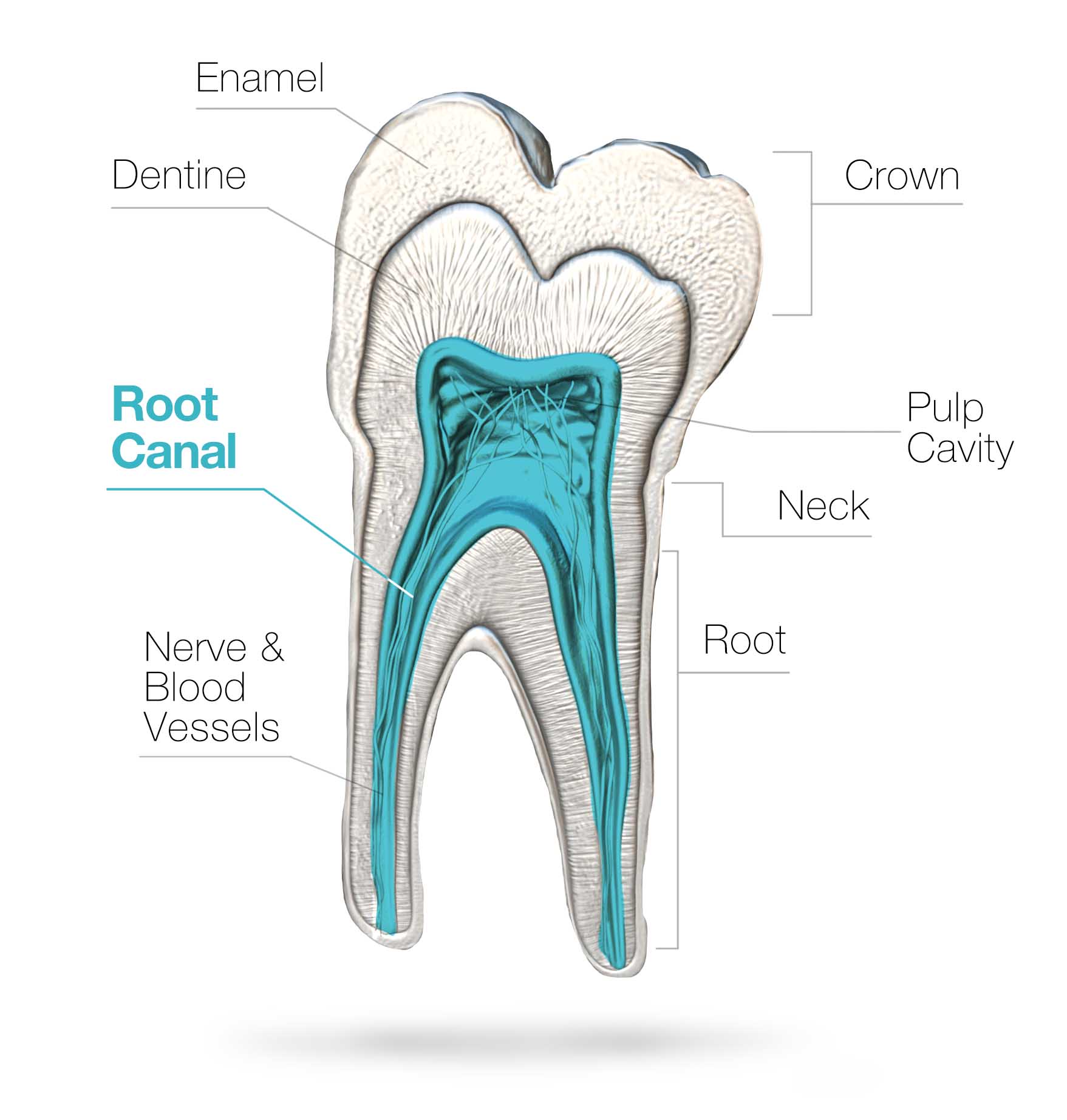Root Canal Therapy
Many patients tend to shy away from the idea of a root canal, unsure of exactly how this procedure takes place and why it is so important. With advanced instruments and techniques, however, root canals can be carried out quickly and in a completely comfortable environment. For those that would like to know more about this common procedure, here is a closer look at why root canals are so important for certain oral health conditions and the modern methods that are used to make them as painless and stress-free as possible.

Your Tooth &
Its Pulp
Within every single tooth is a bundle of nerves and pulp. While the tooth is developing, the pulp is a vital component for proper formation. When the tooth is fully developed, the pulp helps to maintain the health and integrity of the outer layers of the tooth. Whenever there is damage to the tooth which exposes the pulp, there is a very high likelihood that the pulp can become infected which will in turn damage the root and hard outer shell of the tooth.

Signs & Symptoms
While regular dental checkups are the best way to find serious oral health issues in their earliest stages, there are some common signs and symptoms that a root canal may be needed. Typical symptoms that patients should consider include tenderness within the mouth, sensitivity to hot and cold, severe toothaches, or an abscess (small white pimple) on the gums.
While these symptoms do not always mean that tooth decay is taking place, it is important to schedule an appointment immediately in order to carry out more tests.

Is a Root Canal Necessary?
Some patients do opt for a tooth extraction or decide to forgo a root canal altogether, but this could cause health issues in the future. When the pulp becomes infected, bacteria can spread throughout the mouth and cause a myriad of secondary issues. Over time, the tooth will die completely and a full tooth extraction will be necessary. Tooth extractions will help to remove the damaged tooth and diseased pulp, but it is a much more complex procedure and can cause other problems with surrounding teeth.
What to Expect
After the initial consultation, patients will schedule a second appointment for the root canal itself. After the tooth and the surrounding tissue are completely numb, a small rubber dam will be placed around the tooth to keep it separated and free from saliva. A small opening is made in the tooth and the dentist will then remove the pulp, nerve bundles, and tooth decay if there is any. The tooth is then sealed with specially medicated dental materials that will preserve its health and integrity.
Once the final filling has been placed, there may be some soreness for a short period after the appointment. At that point, patients can enjoy a healthier new tooth for the rest of their life with proper oral hygiene habits and regular trips to the dentist.


Think You Need a Root Canal?
Have you been experiencing the signs and symptoms that indicate a root canal may be needed? Schedule an appointment at Eissens Dentistry!
